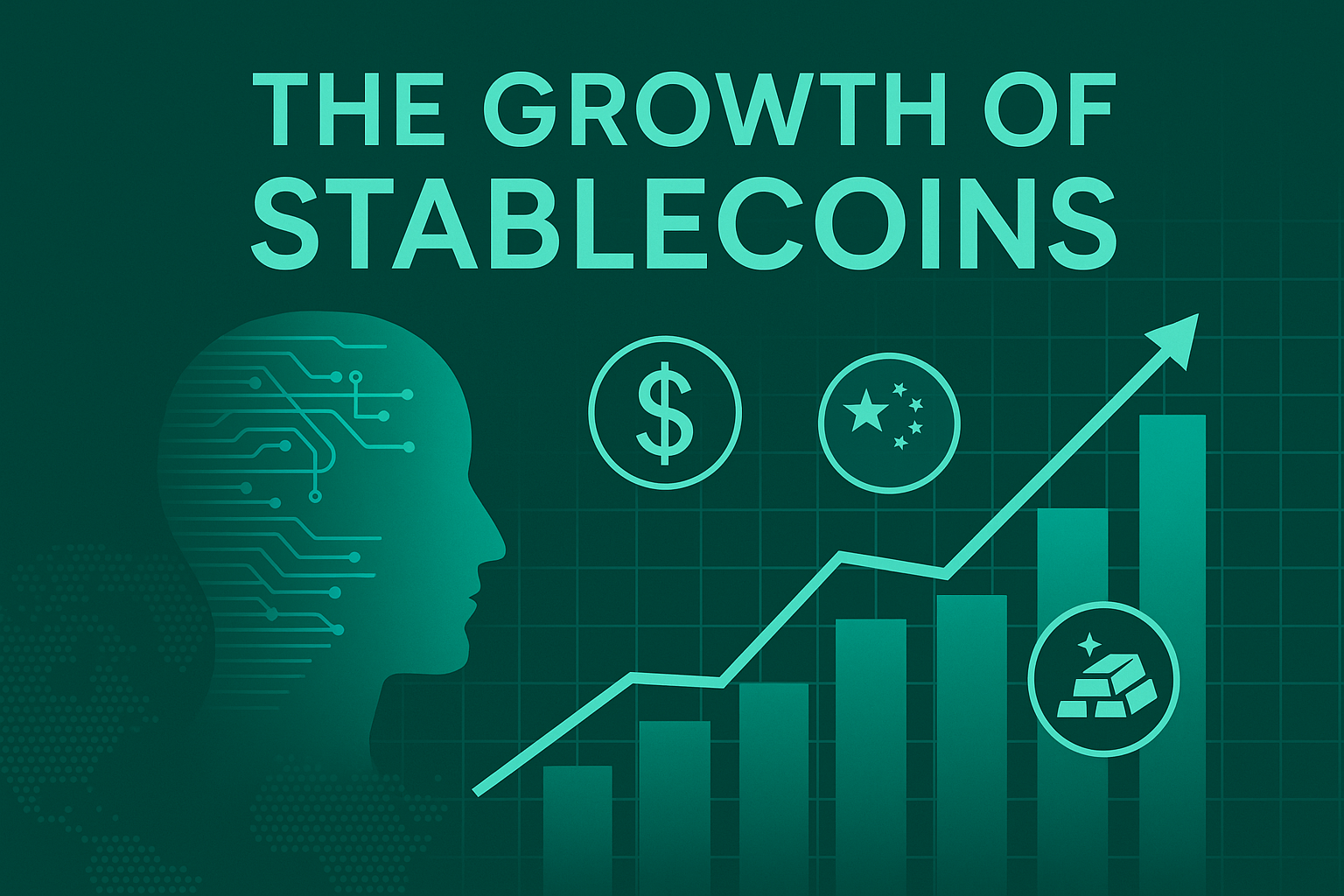— A BIS Perspective and Global Regulatory Analysis —
- 1. Introduction: The Emergence of a Parallel Monetary System
- 2. BIS Assessment: Stablecoins Fail to Qualify as True Money
- 3. Threats to Sovereignty and Financial Stability
- 4. Global Regulatory Responses: Toward Comprehensive Oversight
- 5. The BIS Vision: Tokenized Sovereign Money
- 6. Conclusion and Policy Recommendations
- References
1. Introduction: The Emergence of a Parallel Monetary System
As of mid-2025, the stablecoin market has surged to approximately $255 billion, doubling in size since 2023. Dominated by two USD-pegged tokens (USDT and USDC, accounting for over 90%), stablecoins are no longer mere crypto instruments — they now function as de facto currencies in parts of the world.
In response to this development, the Bank for International Settlements (BIS) has issued a stark warning: stablecoins, though often branded as “digital cash,” fail to meet the essential criteria of sovereign money and pose systemic threats to monetary and financial stability.
2. BIS Assessment: Stablecoins Fail to Qualify as True Money
The BIS identifies three foundational qualities of sound money that stablecoins lack:
| Monetary Principle | Stablecoin Deficiency |
|---|---|
| Singleness | Market value varies by issuer; tokens are not uniformly interchangeable. |
| Elasticity | Unlike central banks, issuers cannot adjust supply based on economic demand. |
| Integrity | No deposit protection, weak KYC/AML enforcement, and regulatory uncertainty. |
Thus, the BIS concludes that stablecoins are not reliable substitutes for central bank money, and should not be considered “digital cash equivalents.”
3. Threats to Sovereignty and Financial Stability
The BIS outlines three primary systemic risks posed by the proliferation of stablecoins:
- Monetary Sovereignty Erosion
In many emerging markets, stablecoins pegged to the U.S. dollar are replacing local currencies, undermining the effectiveness of national monetary policy (a phenomenon akin to unofficial dollarization). - Ineffective Monetary Policy
Stablecoins bypass interest rate transmission mechanisms, making it difficult for central banks to maintain macroeconomic control. - Market Distortion
Stablecoin issuers often hold massive reserves in short-term U.S. Treasury securities, potentially distorting money markets (e.g., inflows of just $400 million can move yields by 5 basis points).
4. Global Regulatory Responses: Toward Comprehensive Oversight
According to the BIS, over 70% of jurisdictions are either developing or have enacted stablecoin-specific regulatory frameworks. Key developments include:
🇺🇸 United States: The GENIUS Act
- 100% reserve requirements
- Mandatory licensing and reporting
- AML/KYC compliance
- Interest-yielding functions restricted to banks
This law marks the first comprehensive federal framework for stablecoins in the U.S., aiming to regulate them akin to deposit-taking institutions.
🇪🇺 European Union: MiCA Regulation
- Licensing of stablecoin issuers
- Requirements for reserve asset quality and liquidity
- Investor protection and resolution planning
🇬🇧 United Kingdom
- Highly skeptical of privately issued stablecoins
- Favors central bank digital currency (CBDC) development under state oversight
5. The BIS Vision: Tokenized Sovereign Money
The BIS is not only critical of stablecoins but also proposes a forward-looking vision for digital finance architecture:
- Unified Ledger System
A shared infrastructure integrating central bank money, commercial bank deposits, securities, and government debt on a tokenized, interoperable platform. This aims to support instant settlement, reduce risk, and enhance transparency. - Project Agora
A multi-central-bank initiative involving pilot projects across Europe, Asia, and the Americas, designed to test large-scale CBDC applications as public alternatives to private stablecoins.
6. Conclusion and Policy Recommendations
The rise of stablecoins is not just a technological innovation — it is a challenge to the existing monetary order. Policymakers and regulators must act decisively:
Short-Term (1–2 Years):
- Strengthen regulatory oversight
- Mandate full reserve backing
- Impose licensing and reporting obligations
Medium-Term (2–5 Years):
- Explore synergies between CBDCs and regulated stablecoins
- Develop public-private token ecosystems under supervisory frameworks
Long-Term (5+ Years):
- Redesign monetary infrastructure with interoperable ledgers and sovereign digital currency platforms
- Promote international cooperation to avoid regulatory arbitrage
Stablecoins may offer efficiency and borderless usability, but only sovereign institutions can guarantee the public trust essential to any monetary system.


